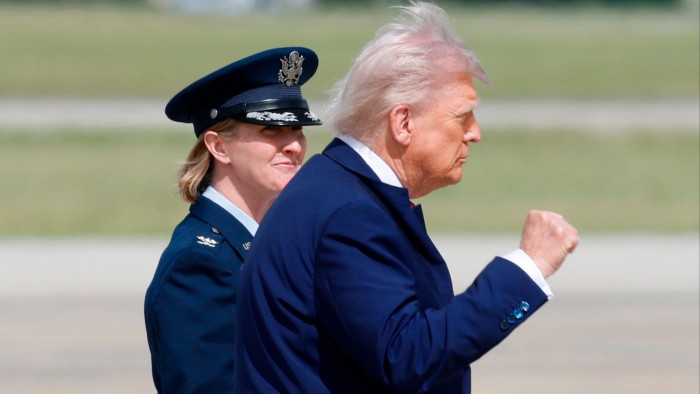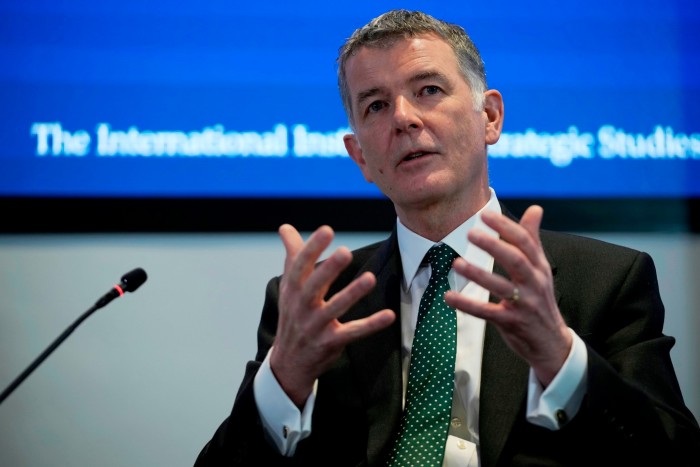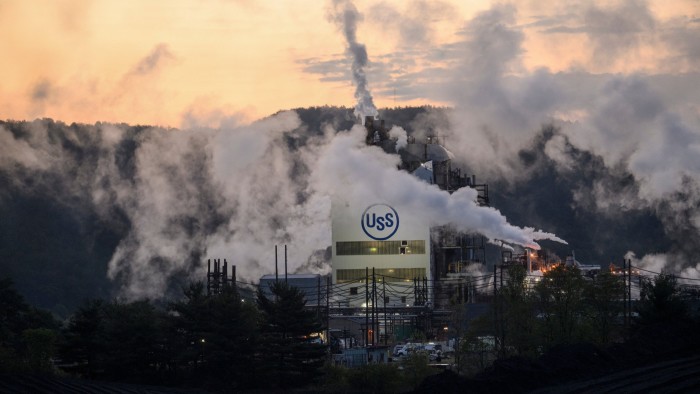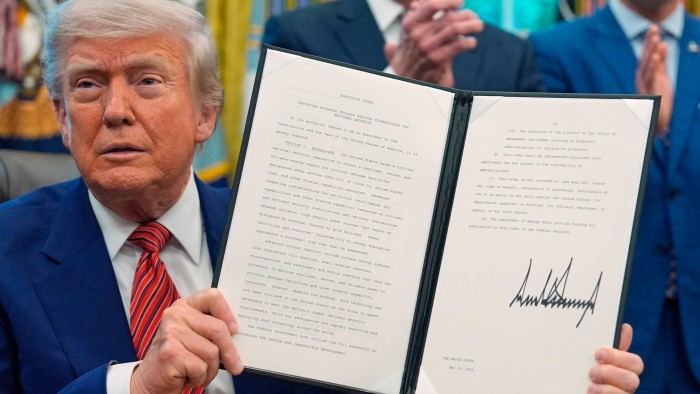Dollar drops as Trump’s tariffs stoke economic fears
Unlock the Editor’s Digest for free
Roula Khalaf, Editor of the FT, selects her favourite stories in this weekly newsletter.
The dollar slumped on Thursday and global stock markets dropped as investors rushed to price in growing damage to the world’s biggest economy from Donald Trump’s trade war.
The dollar fell 2.4 per cent against a basket of trading partners’ currencies, on track for its worst day in a decade, as investors fretted about lower growth from the president’s levelling of sweeping tariffs on US imports, and bet on faster interest rate cuts.
“It’s been a big sell-off for the dollar,” said Lee Hardman, senior analyst at MUFG. He said the decline had been driven by a more “stagflationary environment” in the US as tariffs feed inflation and hit growth, but also a reaction to “erratic” policymaking.
“[The tariffs move] is raising questions over investors’ confidence in policymaking in the US . . . playing into a short-term loss of confidence in the dollar,” he added.
The declines came after the White House on Wednesday revealed sweeping 10 per cent tariffs on almost all US imports, and levies of 20 per cent on EU goods and 34 per cent on Chinese goods, on top of tariffs already announced.
Shares of export-focused companies led a stock sell-off in Europe and Asia, while US stock futures tumbled, as markets reeled from Trump’s full-blown assault on the global trade order.
The Stoxx Europe 600 was down 2.6 per cent by lunchtime, with consumer cyclicals, financial and energy stocks among the big fallers as investors fretted about the economic fallout from tariffs against European nations, and their retaliation.
“It’s worse than expected, there’s no sugar-coating it,” said Zhikai Chen, head of global emerging market equities at BNP Paribas Asset Management.
Retailers Adidas and Puma were down almost 9 per cent and nearly 11 per cent, respectively, while banking group Standard Chartered lost 9.5 per cent.
On Wall Street, the S&P 500 fell 3.2 per cent in early trading, piling further pain on a market that had already been pushed into a correction this year by Trump’s tariff threats and a sell-off in the tech sector. The tech-heavy Nasdaq Composite fell 4.3 per cent.

“The trade war is a bit of a mess,” said Stephen Jen, chief executive of asset manager Eurizon SLJ. He said the shock would be “stagflationary for the US and elsewhere, and the financial markets will need to cope with this shock” until some of the tariffs are reduced.
Strategists said the scale of the dollar’s fall — with the currency failing to perform its traditional role as a haven in times of stress — reflected growing worries about US institutional strength.
“The US administration’s approach to calculating the tariffs raises serious concerns about policy credibility, undermining [the dollar],” said George Saravelos at Deutsche Bank.
The euro rose 2 per cent to $1.110, on track for its biggest one-day rise since 2022, and touching its strongest level since last October.
Elsewhere in global stocks, the UK’s FTSE 100 was down 1.5 per cent. Japan’s Topix closed 3.1 per cent lower and Hong Kong’s Hang Seng index fell 1.5 per cent.
Markets were reordered according to the level of pain meted out by the new trade levies. Vietnam’s stock index was down almost 7 per cent, the worst-performing primary index tracked by Bloomberg, after the country was hit with a 46 per cent tariff, one of the largest.
The Japanese yen rallied 2.4 per cent as traders looked for protection amid the dollar’s fall.
Government bonds surged as investors looked for safety. Ten-year US Treasury yields fell 0.17 percentage points to 4.03 per cent as the price of the debt jumped.
Traders are now pricing in three or four quarter-point interest rate cuts from the Federal Reserve by the end of 2025 to shore up the US economy, up from three on Wednesday, according to levels implied by swaps markets.
“Even if tariffs are ultimately reduced by year-end, the near-term shock and associated uncertainty is likely to drive a near-term slowdown in the US economy and reduce full-year 2025 growth to closer to or below 1 per cent,” said Mark Haefele, chief investment officer at UBS Global Wealth Management.






